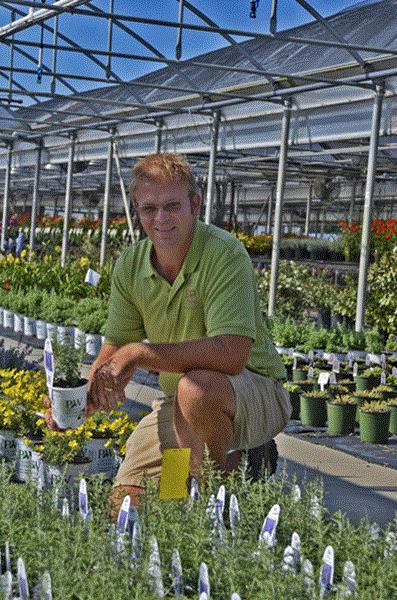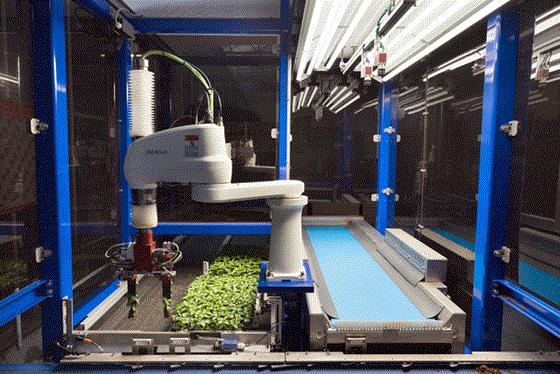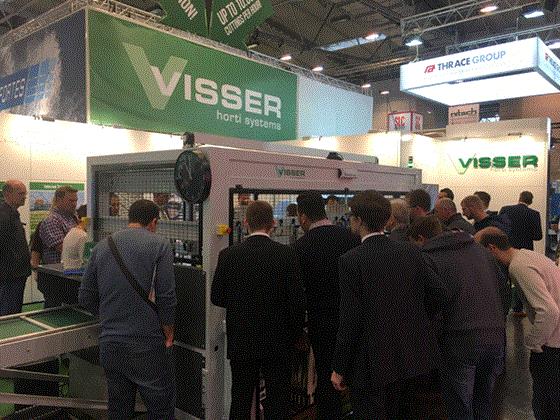Thanks to Irma, caladiums supply is tight
Doggone hurricane! She didn’t just flatten greenhouses, shadehouses and crops, she also flooded the caladium fields of Central Florida, where most of the world’s caladiums come from. And thanks to that, there’s a report that there’s a “significant” caladium bulb shortage this year.
That’s the word from caladium grower/expert Terri Bates, whose family has been in the business in Lake Placid, Florida, since 1945, when her grandfather Emmett returned home from the war.
“Yes, there is a significant caladium bulb shortage this year,” Terri replied when I emailed her about rumors of a shortage. “We had a direct hit from Irma (both sides of the eye wall), which caused flooding and wind damage to the plants. About four weeks later we were hit by a tropical system that dropped 7 inches [of rain] in one day and the fields flooded again.”
Combine that with delays to harvesting, and it adds up to about a 35% decline in supply for Bates Sons & Daughters, she says. But they’re working hard to make sure regular customers who got their orders in will get what they need. Alas, no new orders or additions are being accepted. Bummer!
“It is a challenging year,” Terri concluded, adding in her usual good humor, “My phone does not stop ringing and my ears hurt.”

More than just the hurricane
 Classic Caladiums, circa 2010 when I last visited.
Classic Caladiums, circa 2010 when I last visited.
And more than just caladiums. The citrus industry has taken a hit, too, says Bob Hartman of Classic Caladiums in Avon Park, about 30 miles north of Lake Placid. Bob sent a letter to customers January 29 that stated, in part:
Similar to the devastating hurricane season of 2004, 2017 was not kind to Florida agriculture. USDA, for instance, is predicting a 30% to 50% reduction to the citrus harvest because of Hurricane Irma. Similarly, the caladium industry was not spared the ravages of Mother Nature. Last spring, right at the end of the planting season, we experienced 22 inches of rain in 18 days resulting in widespread flooding and stand losses due to recently planted seed pieces drowning.
On September 10 and 11, Hurricane Irma ravaged with four hours of sustained winds in excess of 110 miles per hour tearing across central Florida and dropped between 15 and 18 inches of rain in less than 24 hours. September and early October are the most important bulb sizing months. The winds and rains of Irma caused a cessation of bulb sizing.
The result, he says, will not just be fewer bulbs, but also smaller bulbs, and so some substitutions might have to be made. Such as four #2 bulbs or two #1 bulbs in a 6-in. pot instead of one jumbo bulb. Bob says the cost per pot will work out about the same.
So, the message? Appreciate your caladiums (and your caladium suppliers). And make sure your customers, do, too!
What do libraries and caladiums have in common?
I learned this little tidbit while researching the caladium news above:
Lake Placid, the lake for which the town in Florida is named, was originally called Lake Stearns (as was the town on its shore). In 1926, Dr. Melvil Dewey, the inventor of the Dewey Decimal System and the founder of the Lake Placid Club in Lake Placid, New York, founded a second Lake Placid Club in Lake Stearns. He then convinced the Lake Stearns town leaders to change the town and the lake’s name “Lake Placid.”
Also, his son, Godfrey, helped Lake Placid, New York, secure the first Winter Olympics to be held in America in 1932, putting that town on the map.
And now, as Paul Harvey would say, you know the rest of the story. Two stories, in fact.
Perennial Webinar on Valentine’s Day

If you plant most of your perennials in late winter and spring, you may be missing out on markets, crops and plant quality. That’s what you’ll learn about in the webinar “Perennial Plants for Every Season—the Right Material at the Right Time,” by guest expert Jeremy Windemuller of Walters Gardens.
Jeremy will take you through the benefits of summer perennial planting, including the benefits you’ll gain, the crops to grow this way, details on cultural requirements, pinching and trimming, preparation for overwintering and much more.
This FREE one-hour webinar will be Wednesday, February 14, at 1 p.m. Eastern/Noon Central. Invite your sweetheart to join you!
Sign up at www.growertalks.com/webinars.
I’ll be your host, so you can be assured this webianr will be fact-filled and fun!
ISO Group's Cutting and TransPlanter
I realized that last time, in my IPM Essen coverage, I didn’t share a single thing from Hall 3, the big equipment hall. Most people crowd the flower halls, but Hall 3 is where you find me with my head in the transplanters and flat fillers (plus, Modiform has a killer after-show reception!).
The most significant new tool is by ISO Group, maker of the ISO cutting sticker. I’ve written about it in GrowerTalks before, such as HERE. Cutting sticking machines are super cool, but their problem is they only stick cuttings, and that’s a task you only do for a short time each season. Then the thing just sits there.
 ISO's Cutting and TransPlanter, as they call it. The blue belt is for URCs.
ISO's Cutting and TransPlanter, as they call it. The blue belt is for URCs.
ISO has solved the question of “what else can it do?” by adding transplanting capabilities to its cutting sticker, via an additional feed belt (for plug trays) and a removable head system. You swap the sticking head for a transplanting head with multiple grippers. This lets you use the machine to plant a wide variety of products, from unrooted cuttings to bedding plant plugs to rooted liners. As for the cost, I couldn’t get a good figure, but who asks anymore? It’s all about how much more work you can get done how much more quickly, right?
Speaking of sticking cuttings, an update on AutoStix
AutoStix isn’t brand new, but it’s still of great interest to growers because it’s one of only two commercial systems for sticking unrooted cuttings (the other being the aforementioned ISO Group). The Visser stand in Hall 3 was constantly buzzing with folks watching demos of the machine at work.

We asked Ball Horticultural Company’s Michael Henzler for an update on AutoStix (Ball is Visser’s North America distribution partner). He told us that there are currently 11 AutoStix machines running in North America, and all the major unrooted cutting suppliers are supplying test strips to growers (AutoStix uses strips of cuttings that are stuck offshore). Visser expects at least 10 more machines to be in place for 2019, with an estimated sticking volume of 60 million cuttings.
One new benefit to users is an Internet portal, www.autostix.eu, which will provide premium access to AutoStix participants, with all sorts of information available, such as best practices, how-to videos, FAQ, updates on service and so on.

Lowdown on Lowpad
My favorite new invention at IPM had to be the Lowpad, from TTA’s sister company Eurotec. And I might have missed it had I not stopped to watch a video playing in the TTA stand (which, for full disclosure, was in the Galleria, not Hall 3).
What’s Lowpad? It’s a high-tech internal transport solution intended for the world of big fulfilment warehouses. It’s one of a new kind of internal transport called an “AGV,” or automated guided vehicle, designed to autonomously move product in warehouse-type environments. You’ve seen these little square vehicles in the videos of Amazon’s fulfilment centers, lifting and moving tall racks of product and driving them to and from the picking areas.

What makes Lowpad special is its height: just 4 3/4 inches, nearly 12 inches shorter than competing AGVs. That means more space for product in the warehouse.
I’m writing about Lowpad because it can just as easily pick up and move a plant shipping rack—or pull a whole train of them. It operates wirelessly, using a camera and LIDAR, to guide the independently steering drive wheels. It can automatically determine the most efficient route from the greenhouse to the packing area and back again, freeing up employees to do more important things than haul racks. Or it can follow an employee through the greenhouse as the pick orders. There’s also a pallet jack version, which could move potting soil or other heavy materials around your facility as needed.
We’re not sure how soon we’ll see Lowpad moving racks of annuals in and out of greenhouses, but with labor costs and labor availability being what they are, it might not be long.
Plus, I bet you can ride it around the greenhouse like a cat on a Roomba!
Check it out at www.lowpad.com.

In Memoriam: Gordon Elsbury

One of Indiana's outstanding growers, Gordon Elsbury, passed away February 2 after suffering a heart attack. He was 75. I got the news from long-time Indiana horticulturist and beloved GrowerTalks columnist emeritus Dr. P. Allen Hammer, also an Indianian.
Gordon earned his bachelor’s degree in horticulture and masters in agronomy from Purdue (where Allen was a long-time hort professor). He was a County Extension Youth Agent for many years, then started his own business, Elsbury Greenhouses, in Hope, Indiana, in 1973, where he became renowned as a garden mum grower. He was named Indiana Flower Grower of the Year and was an important leader in the Columbus in Bloom (Columbus, Indiana) program for America in Bloom.
Said Allen of Gordon, “He was just a good guy and an important part of the Indiana floriculture industry.”
Phones, tablets don’t cut it for online shopping
Industry reports have indicated that shoppers are less likely to hit the “checkout” button when using phones and tablets vs. traditional computers when shopping for goods online (the abandonment rate was 78% in 2016!), but nobody had figured out why. Now, new research from the University of East Anglia (Norwich, England) reveals that this is because they often worry that they’re not seeing the full picture on a mobile app, or that they could be missing out on special offers or overlooking hidden costs when using the smaller screen. Concerns about privacy and security can also motivate people to put items into their shopping baskets but then quit without paying. This is bad news for retailers who are investing in e-commerce platforms.
The study, published online in the Journal of Business Research, suggests that retailers should focus on developing apps that are more streamlined, uncluttered and better integrated with payment features such as ApplePay if they want to cut down on shopping cart abandonment.
Now, I don’t know how much it applies to us, since not that many of us are doing e-commerce (except you Direct Gardening Association folks, who should pay attention). But one thing this does bring to mind is how brick & mortar retailers can use this weakness of online sales as a marketing tool:
“Come to a real store and see a real product, talk to a real person, see everything and get all the best offers! And as a bonus, we won’t steal your identity while you’re here!”

Taiwanese Dendrobium Imports ok'd by APHIS
The Animal and Plant Health Inspection Service (APHIS) announced last week that it has finalized a rule allowing dendrobium species in growing medium to be imported from Taiwan into the U.S. This new rule will take effect March 30.
What makes dendrobiums safe to import is the “systems approach.” This approach protects against plant pests and diseases coming into the U.S. by requiring Taiwanese greenhouses to register and go through monitoring of specific sanitation and pest control practices. Participating growers must sign a written agreement agreeing to comply with U.S. regulations and allow for inspectors to inspect their facilities. In addition, each shipment that comes in must have a phytosanitary certificate.
Several other orchid species are already allowed to be imported from Taiwan into the U.S, including phalaenopsis and oncidium.
Finally …
I’m always looking for evidence that the general public finds our stuff to be fascinating. Here’s yet another example: Treevo, a new Kickstarter project that lets you grow a plant with a quirky circular trunk. The plant they use is a brachychiton, a type of Australian bottlebrush.
Now, those of you who’ve been around a while know that twisted trunks are nothing new. Think braided ficus and all the crazy shapes of so-called “lucky bamboo” (Dracaena braunii).
Still, what’s old is new again, right? And I’ve never seen anyone try to sell a “braid your own ficus” kit, so I give them credit for doing something different with plants.
See you next time!

Chris Beytes
Editor
GrowerTalks and Green Profit
This e-mail received by 22,846 loyal readers!
Thanks to my loyal sponsors, who help me reach the 22,846 readers of Acres Online in 66 countries! Want to be one (a sponsor, that is)? Give Paul Black a shout and he'll hook you up.